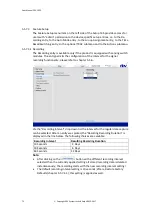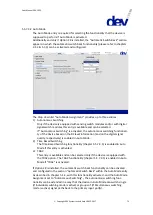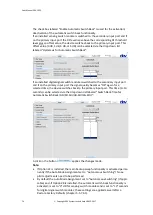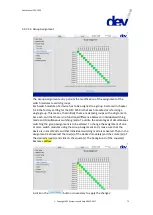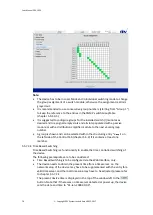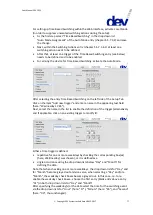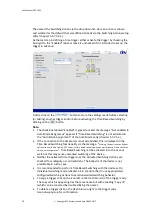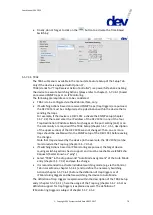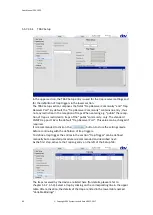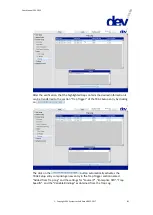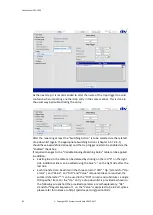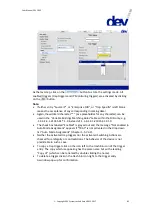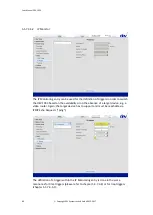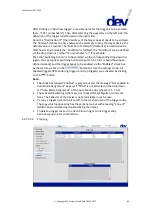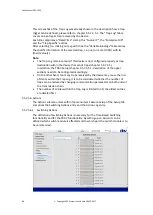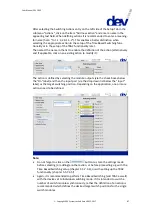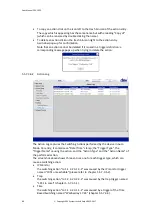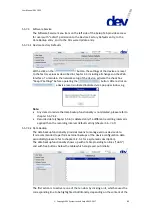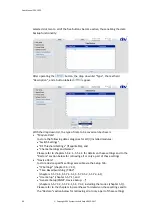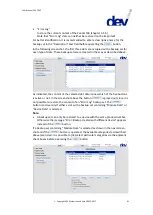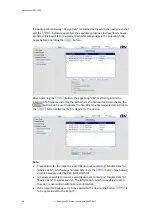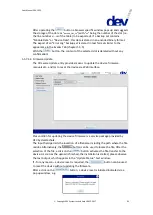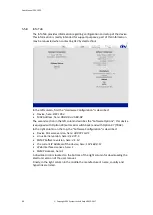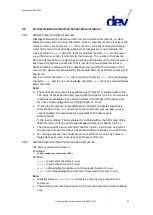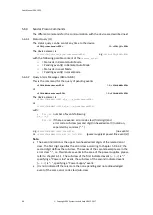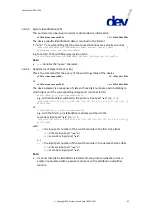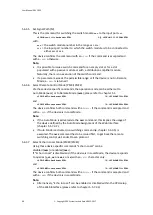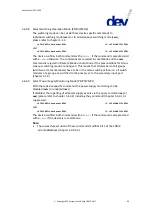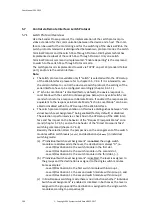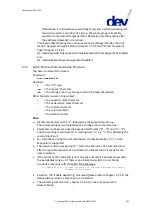
User Manual DEV 1953
86
Copyright DEV Systemtechnik GmbH 2015-2017
This screenshot of the Trap Log was already shown in the description how a trap
trigger can be defined; please refer to chapter 5.5.7.3.5.1. The "Trap Log" table
covers one entry per trap received by the device.
Each line comprises a "Date/Time" stamp, the "Source IP", the "Enterprise OID",
and the "Trap Specific" entries.
After selecting (i.e. clicking on) a specific line the "Variable Bindings" table carries
the specific information of the selected trap, i.e. one (or more) OID(s) with its
(their) value(s).
Note:
The Trap Log remains empty if this device is not configured properly as trap
destination within the device that sends traps (chapter 5.5.7.3.5).
In addition, the TRAC Setup (chapter 5.5.7.3.5.1, description of the upper
section) needs to be configured accordingly.
On the other hand, too many traps received by the device may cause the loss
of clarity within the Trap Log. It is to be considered whether the number of
traps can be reduced by changing communication parameters on both ends of
the transmission chain.
The number of entries within the Trap Log is limited to 30; the oldest entries
are deleted first.
5.5.7.3.6
Actions
The Actions submenu item within the menu item Feature Setup of the Setup Tab
comprises the Switching Actions entry and the Action Log entry.
5.5.7.3.6.1
Switching Actions
The definition of Switching Actions is necessary for the Time Based Switching
functionality and for the TRAC functionality. By setting up an action it can be
defined which switch module is affected and to which port the switch module is to
be commanded.

